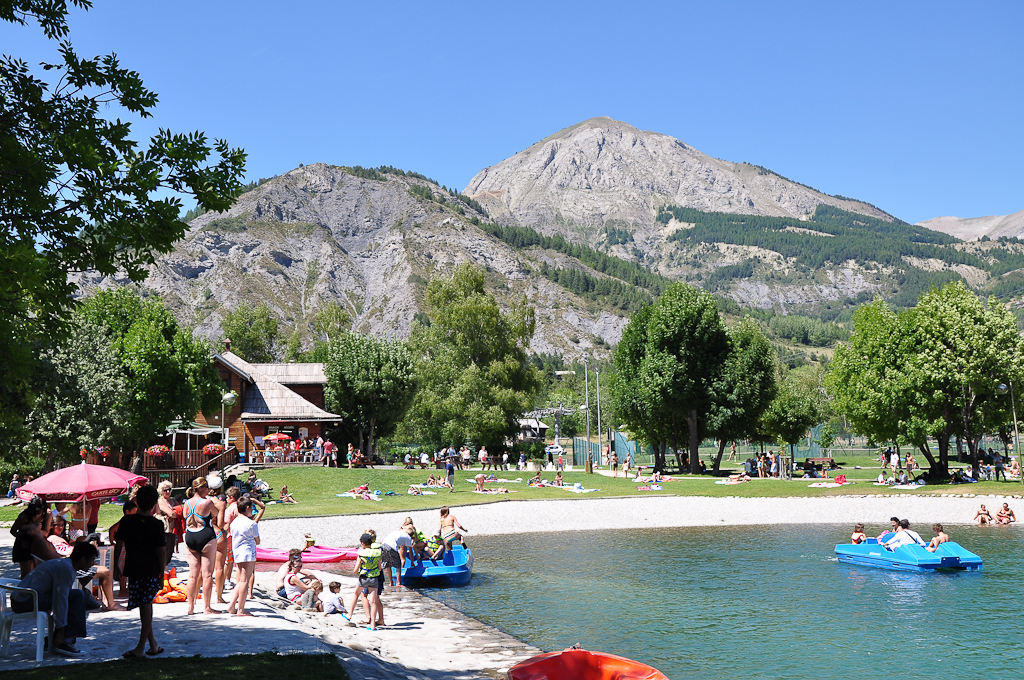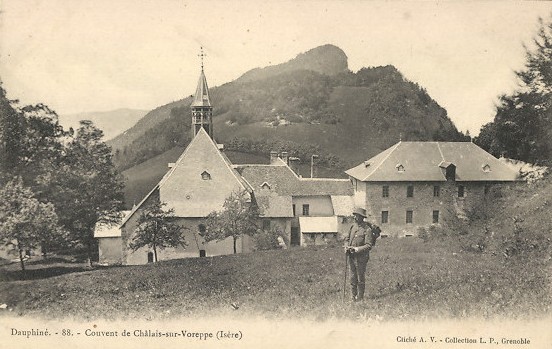|
Pra-Loup
Pra-Loup is a ski resort in France, at Uvernet-Fours in the Alpes-de-Haute-Provence, from the town of Barcelonnette. Geography Ski area The ski station has two separate base areas, 2 km apart: * Pra-Loup 1600 - primary base area at above sea level * Pra-Loup 1500 - (Les Molanès) The lift-served summit elevation is , for a vertical drop of to Pra-Loup 1600. The resort has 53 lifts, of tracks, and its ski area is linked to that of through the valley of Agneliers. Pra-Loup hosted the Junior World Championships for alpine skiing in 1999. Climate The climate is of the Alpine climate, Alpine type. Transport By road: *From Paris and the north: via Lyon, Grenoble, Gap, Hautes-Alpes, Gap and Barcelonnette. *From the south of France: via Aix-en-Provence, on the A51 autoroute as far as Tallard, then in the direction of Barcelonnette. Toponymy The name of Pra-Loup consists of ''Pra'', ''Pro'' and ''lovin'', derived from a patoise form ''Pralovin'', isolated houses in a cleari ... [...More Info...] [...Related Items...] OR: [Wikipedia] [Google] [Baidu] |
Allos
Allos (; oc, Alòs) is a Communes of France, commune in the Alpes-de-Haute-Provence Departments of France, department in the Provence-Alpes-Côte d'Azur region of southeastern France. Allos is a high mountain commune in the southern Alps. The commune experienced a significant rural exodus in the 19th century, following the population movement of the department. Then the town was overwhelmed for eighty years by winter sports: the construction of accommodations and ski-lifts has changed the landscape and the mountain urbanisation. The economy was profoundly altered with almost all jobs being found in tourism. Traditional agricultural activities persisted only marginally. Historically Allos, located in the valley of the Verdon, has long been linked to the Ubaye Valley: first at the time when Ubaye belonged to the House of Savoy, States of Savoy (from 1388 to 1713) then after it became part of France it continued to be administered across the Col d'Allos (impassable in winter). Even ... [...More Info...] [...Related Items...] OR: [Wikipedia] [Google] [Baidu] |
Barcelonnette
Barcelonnette (; oc, Barciloneta de Provença, also ; obsolete it, Barcellonetta) is a commune of France and a subprefecture in the department of Alpes-de-Haute-Provence, in the Provence-Alpes-Côte d'Azur region. It is located in the southern French Alps, at the crossroads between Provence, Piedmont and the Dauphiné, and is the largest town in the Ubaye Valley. The town's inhabitants are known as ''Barcelonnettes''. Toponymy Barcelonnette was founded and named in 1231, by Ramon Berenguer IV, Count of Provence.Albert Dauzat and Charles Rostaing, ''Dictionnaire étymologique des noms de lieux en France'', Éd. Larousse, 1968, pp. 1693–1694. While the town's name is generally seen as a diminutive form of Barcelona in Catalonia, Albert Dauzat and Charles Rostaing point out an earlier attestation of the name ''Barcilona'' in Barcelonnette in around 1200, and suggest that it is derived instead from two earlier stems signifying a mountain, *''bar'' and *''cin'' (the latter of whic ... [...More Info...] [...Related Items...] OR: [Wikipedia] [Google] [Baidu] |
Uvernet-Fours
Uvernet-Fours ( oc, Uvernet e Forns, link=no) is a commune in the Alpes-de-Haute-Provence department, southeastern France. Population See also *Communes of the Alpes-de-Haute-Provence department The following is a list of the 198 Communes of France, communes of the Alpes-de-Haute-Provence Departments of France, department of France. The communes cooperate in the following Communes of France#Intercommunality, intercommunalities (as of 2020 ... References Communes of Alpes-de-Haute-Provence Alpes-de-Haute-Provence communes articles needing translation from French Wikipedia {{AlpesHauteProvence-geo-stub ... [...More Info...] [...Related Items...] OR: [Wikipedia] [Google] [Baidu] |
Aix-en-Provence
Aix-en-Provence (, , ; oc, label= Provençal, Ais de Provença in classical norm, or in Mistralian norm, ; la, Aquae Sextiae), or simply Aix ( medieval Occitan: ''Aics''), is a city and commune in southern France, about north of Marseille. A former capital of Provence, it is the subprefecture of the arrondissement of Aix-en-Provence, in the department of Bouches-du-Rhône, in the region of Provence-Alpes-Côte d'Azur. The population of Aix-en-Provence is approximately 145,000. Its inhabitants are called ''Aixois'' or, less commonly, ''Aquisextains''. History Aix (''Aquae Sextiae'') was founded in 123 BC by the Roman consul Sextius Calvinus, who gave his name to its springs, following the destruction of the nearby Gallic oppidum at Entremont. In 102 BC its vicinity was the scene of the Battle of Aquae Sextiae, where the Romans under Gaius Marius defeated the Ambrones and Teutones, with mass suicides among the captured women, which passed into Roman legends of Germani ... [...More Info...] [...Related Items...] OR: [Wikipedia] [Google] [Baidu] |
Émile Allais
Émile Allais (25 February 1912 – 17 October 2012) was a champion alpine ski racer from France; he won all three events at the 1937 world championships in Chamonix and the gold in the combined in 1938. Born in Megève, he was a dominant racer in the late 1930s and is considered to have been the first great French alpine skier. Allais won the bronze medal in the combined (downhill and slalom), the only alpine medal event at the 1936 Winter Olympics in Garmisch, Germany. These Olympics were the first to award medals in alpine skiing. The previous year, he had won the silver medal in the downhill and combined at the 1935 world championships. In 1937 he was a triple world champion at Chamonix, France, winning all three events (downhill, slalom, and combined). The following year at Engelberg, Switzerland, he won the combined, and took silver in the downhill and slalom. He created the ''École Française de Ski'' which taught innovative methods of Anton Seelos (who was his ... [...More Info...] [...Related Items...] OR: [Wikipedia] [Google] [Baidu] |
Skiing
Skiing is the use of skis to glide on snow. Variations of purpose include basic transport, a recreational activity, or a competitive winter sport. Many types of competitive skiing events are recognized by the International Olympic Committee (IOC), and the International Ski Federation (FIS). History Skiing has a history of almost five millennia. Although modern skiing has evolved from beginnings in Scandinavia, it may have been practiced more than 100 centuries ago in what is now China, according to an interpretation of ancient paintings. However, this continues to be debated. The word "ski" comes from the Old Norse word "skíð" which means to "split piece of wood or firewood". Asymmetrical skis were used in northern Finland and Sweden until at least the late 19th century. On one foot, the skier wore a long straight non-arching ski for sliding, and a shorter ski was worn on the other foot for kicking. The underside of the short ski was either plain or covered with animal ... [...More Info...] [...Related Items...] OR: [Wikipedia] [Google] [Baidu] |
Jausiers
Jausiers (; Vivaro-Alpine: ''Jausièr'') is a commune in the Alpes-de-Haute-Provence department in southeastern France. Politics and administration Population See also * Ubaye Valley *Communes of the Alpes-de-Haute-Provence department The following is a list of the 198 Communes of France, communes of the Alpes-de-Haute-Provence Departments of France, department of France. The communes cooperate in the following Communes of France#Intercommunality, intercommunalities (as of 2020 ... References Communes of Alpes-de-Haute-Provence Alpes-de-Haute-Provence communes articles needing translation from French Wikipedia {{AlpesHauteProvence-geo-stub ... [...More Info...] [...Related Items...] OR: [Wikipedia] [Google] [Baidu] |
Monastère De Chalais
The Monastère de Chalais, also called Châlais-sur-Voreppe or Notre-Dame de Châlais, is a Dominican convent near the town of Voreppe, Isère, France. The convent dates from 1101. The monastery at Chalais began as a house of male hermits, under the guidance of S Hugh of Chateauneuf, like the Carthusian monks. At first the Order of Chalais was independent, but in 1303 it was absorbed by the Carthusians. The monastery was partly destroyed in 1562 during French Wars of Religion, but was rebuilt. The state seized it during the French Revolution (1789–99) and sold it to a private owner. From 1844 to 1887 it was again a monastery, this time of the Dominican friars, before again being sold. The present community of Dominican nuns bought the property in 1963 and restored it. Today the nuns of Chalais manufacture Monastic biscuits to cover their expenses. Location The monastery is about from Voreppe along a winding forest road. It is located on a plateau overlooking Voreppe at an ... [...More Info...] [...Related Items...] OR: [Wikipedia] [Google] [Baidu] |
Mediterranean Sea
The Mediterranean Sea is a sea connected to the Atlantic Ocean, surrounded by the Mediterranean Basin and almost completely enclosed by land: on the north by Western and Southern Europe and Anatolia, on the south by North Africa, and on the east by the Levant. The Sea has played a central role in the history of Western civilization. Geological evidence indicates that around 5.9 million years ago, the Mediterranean was cut off from the Atlantic and was partly or completely desiccated over a period of some 600,000 years during the Messinian salinity crisis before being refilled by the Zanclean flood about 5.3 million years ago. The Mediterranean Sea covers an area of about , representing 0.7% of the global ocean surface, but its connection to the Atlantic via the Strait of Gibraltar—the narrow strait that connects the Atlantic Ocean to the Mediterranean Sea and separates the Iberian Peninsula in Europe from Morocco in Africa—is only wide. The Mediterranean Sea e ... [...More Info...] [...Related Items...] OR: [Wikipedia] [Google] [Baidu] |
Ligurian (Romance Language)
Ligurian () or Genoese () (locally called or ) is a Gallo-Italic language spoken primarily in the territories of the former Republic of Genoa, now comprising the area of Liguria in Northern Italy, parts of the Mediterranean coastal zone of France, Monaco (where it is called Monegasque), the village of Bonifacio in Corsica, and in the villages of Carloforte on San Pietro Island and Calasetta on Sant'Antioco Island off the coast of southwestern Sardinia. It is part of the Gallo-Italic and Western Romance dialect continuum. Although part of Gallo-Italic, it exhibits several features of the Italo-Romance group of central and southern Italy. Zeneize (literally "for Genoese"), spoken in Genoa, the capital of Liguria, is the language's prestige dialect on which the standard is based. There is a long literary tradition of Ligurian poets and writers that goes from the 13th century to the present, such as Luchetto (the Genoese Anonym), Martin Piaggio, and Gian Giacomo Cavalli. G ... [...More Info...] [...Related Items...] OR: [Wikipedia] [Google] [Baidu] |


.jpeg/1200px-Aix_(52402216).jpeg)


